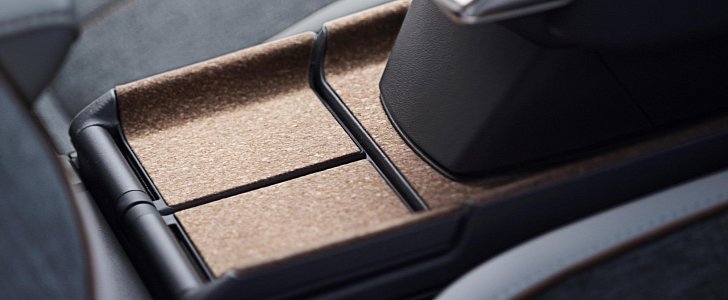Cork isn’t exactly the kind of material that you would expect to find inside a luxury vehicle, let alone a crossover from a volume-oriented automaker. Mazda begs to differ, yet the Japanese automaker happens to have a special relationship with cork.
Before Mazda introduced a three-wheeled trucklet in 1931 that resembled a motorcycle with an open wagon at the rear, Toyo Cork Kogyo Co., Ltd. Was specialized in… well… cork products. It was 1984 when Toyo Cork Kogyo adopted Mazda as the company’s name, and the rest – as they say – is history in the making. Now let’s move on.
The MX-30 isn’t only the first proper EV from Mazda, but the compact crossover with pretty much the same footprint as the CX-30 revisits the cork roots of the 1920s. Meant to celebrate the company’s centenary, the floating center console and inner door handle trim of the MX-30 are made from cork that was sourced from Hiroshima, Japan.
“Wait, isn’t that one of the two cities blown to pieces in World War II?” You’re exactly right, but Japan – and Mazda – rose from the ashes of destruction into better versions of themselves. Question is, what company supplies Mazda with cork for the MX-30?
That would be Uchiyama Manufacturing Corp., which is based to the east of Hiroshima. This company took Mazda’s cork manufacturing business in 1944, assuming control of the factories and machines. Given their history, it doesn’t come as a surprise why the two entities work together these days. Cork also happens to be more sustainable than wood veneer. The latter commodity requires lumber, and lumber comes from trees.
“When Toyo Cork Kogyo was created, technologies in plastics and rubber had not been developed as far as they are today,” said chief designer Youichi Matsuda. “Cork was used as an alternative material for gaskets and walls back then.”
Cork took a backseat after WW2 as advancements in plastic and rubber production favored the latter two, cementing their status in many more applications and on an industrial scale.
The MX-30 isn’t only the first proper EV from Mazda, but the compact crossover with pretty much the same footprint as the CX-30 revisits the cork roots of the 1920s. Meant to celebrate the company’s centenary, the floating center console and inner door handle trim of the MX-30 are made from cork that was sourced from Hiroshima, Japan.
“Wait, isn’t that one of the two cities blown to pieces in World War II?” You’re exactly right, but Japan – and Mazda – rose from the ashes of destruction into better versions of themselves. Question is, what company supplies Mazda with cork for the MX-30?
That would be Uchiyama Manufacturing Corp., which is based to the east of Hiroshima. This company took Mazda’s cork manufacturing business in 1944, assuming control of the factories and machines. Given their history, it doesn’t come as a surprise why the two entities work together these days. Cork also happens to be more sustainable than wood veneer. The latter commodity requires lumber, and lumber comes from trees.
“When Toyo Cork Kogyo was created, technologies in plastics and rubber had not been developed as far as they are today,” said chief designer Youichi Matsuda. “Cork was used as an alternative material for gaskets and walls back then.”
Cork took a backseat after WW2 as advancements in plastic and rubber production favored the latter two, cementing their status in many more applications and on an industrial scale.






























